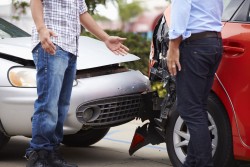Personal Injury Frequently Asked Questions
Will I owe anything if we do not win the case?
If we are unable to successfully negotiate a settlement on your behalf, no money will come out of your pocket. You are only responsible for costs incurred if we win.
How long can you estimate my case will last?
The answer to this question depends on the intricacy of the case itself. For example, the average auto or general negligence case can reach a resolution in five to eight months. An average medical malpractice case can take up to one to two years from the day the complaint is first filed. We believe a case should not be resolved while the client is still recovering, so that a complete and clear picture as to the future of their medical condition can be obtained. It is every attorneys fear to allow their client to sign a release, only to discover shortly thereafter that additional medical care, possibly a costly surgery, is needed. Because of these precautions, the timeline for each case varies.
How much is my personal injury case worth?
Obviously no one case is the same as another. However, there are several factors involved when placing a value on any case: past medical history, current and future medical expenses, lost wages, loss of earning capacity in the future, and pain and suffering. Each of these factors impact the assessment of a case; however, we can often rely on our past experience with similar Florida cases to estimate a value which we believe best represents a settlement comparable to the damages sustained. We rely on medical records and statements which we begin to gather from the moment you hire us to best represent your case.
Why are we using my insurance provider if the accident was not my fault?
Even if a client is involved in an accident caused by another person, a claim for personal injury protection benefits, or PIP, will be filed with our client’s own auto insurer. This is what is known as “no-fault” insurance, and by law, it requires the insurance company to pay 80 percent of a person’s medical bills and 60 percent of their lost wages up to $10,000 regardless if they are to blame.
What is a letter of protection used for?
Not every driver on the road has their own policy of private health coverage, or there are occasions when PIP benefits have been depleted. When this occurs, medical providers will sometimes accept a “letter of protection.” This document allows the patient to continue receiving necessary medical care without having to pay for it until a later date. Most often, reimbursement is not expected until conclusion of the case, when the patient has had an opportunity to reach full recovery. It is important that the client understand that a letter of protection on file does exempt them from paying their medical bills in the event the case is not resolved in their favor.


